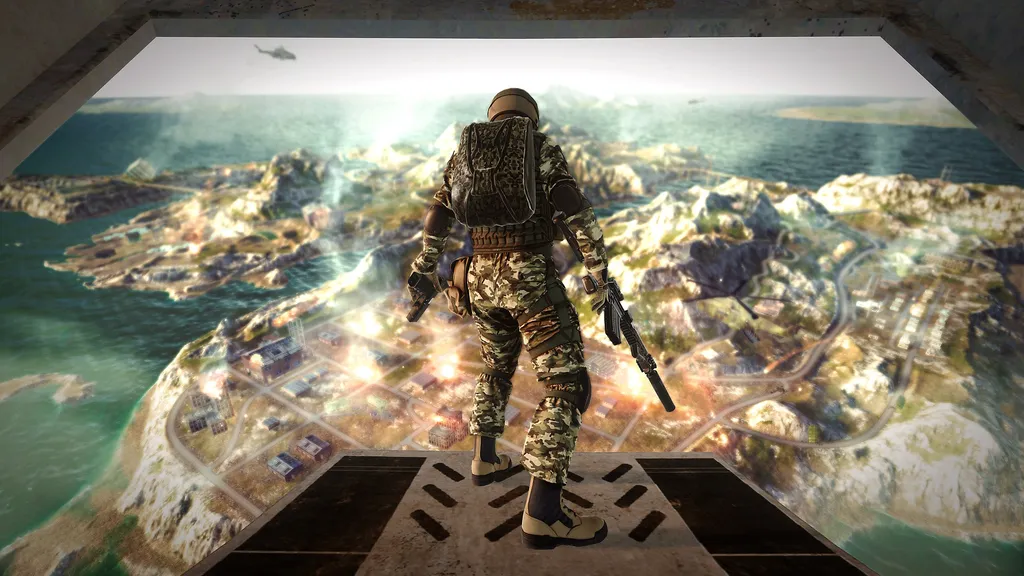Editor’s Note: This was originally published on August 2nd but has been republished on August 10th to coincide with the Open Alpha period. More details here.
Original: When a game vanishes off the face of the Earth for over six months after an initial reveal, it’s usually a bad sign. But in the case of Virtual Battlegrounds, an upcoming VR battle royale game from developer Cyberdream, they were just working hard on their game for eight months. A lot has happened in that time.
The last time we covered Virtual Battlegrounds, the idea of a VR battle royale game was still unique. Stand Out existed already, but it was in its infancy and there wasn’t even a peep about Rec Royale or Do or Die VR yet. Now, the VR landscape is very different and it’s going to be tough for the small indie developer to still make a splash with their ambitious take on the genre.
This article will be focused mostly on my own hands-on impressions. If you want to see footage of the game and hear what the developer has to say, you can watch our feature video above.
The Difference Makers
If Cyberdream wants Virtual Battlegrounds to be successful, it has some stiff competition. On the one hand there are all of the existing battle royale games outside of VR that have made significant names for themselves, primarily being PlayerUnknown’s Battlegrounds (PUBG) and Fortnite, as well as others like Realm Royale and H1Z1. These titles are where the genre got started and where it’s been popularized. Just simply making a VR version of that concept isn’t really enough. People expect more than copy-paste developers.
Then on the other hand we’ve already got a few VR battle royale games on the market. There’s Rec Royale, a game mode in the free-to-play social VR platform, Rec Room, that’s got a ton of players across PSVR, Rift, and Vive, and we’ve got Stand Out: VR Battle Royale, arguably the first VR battle royale game to make a splash. There are others, but those are the main two.
After playing an in-development build of Virtual Battlegrounds while visiting Cyberdreams’ Orlanda, FL studio, clearly the most significant two ways they plan to differentiate themselves are: 1) map size/scope, and 2) physicality of gameplay.
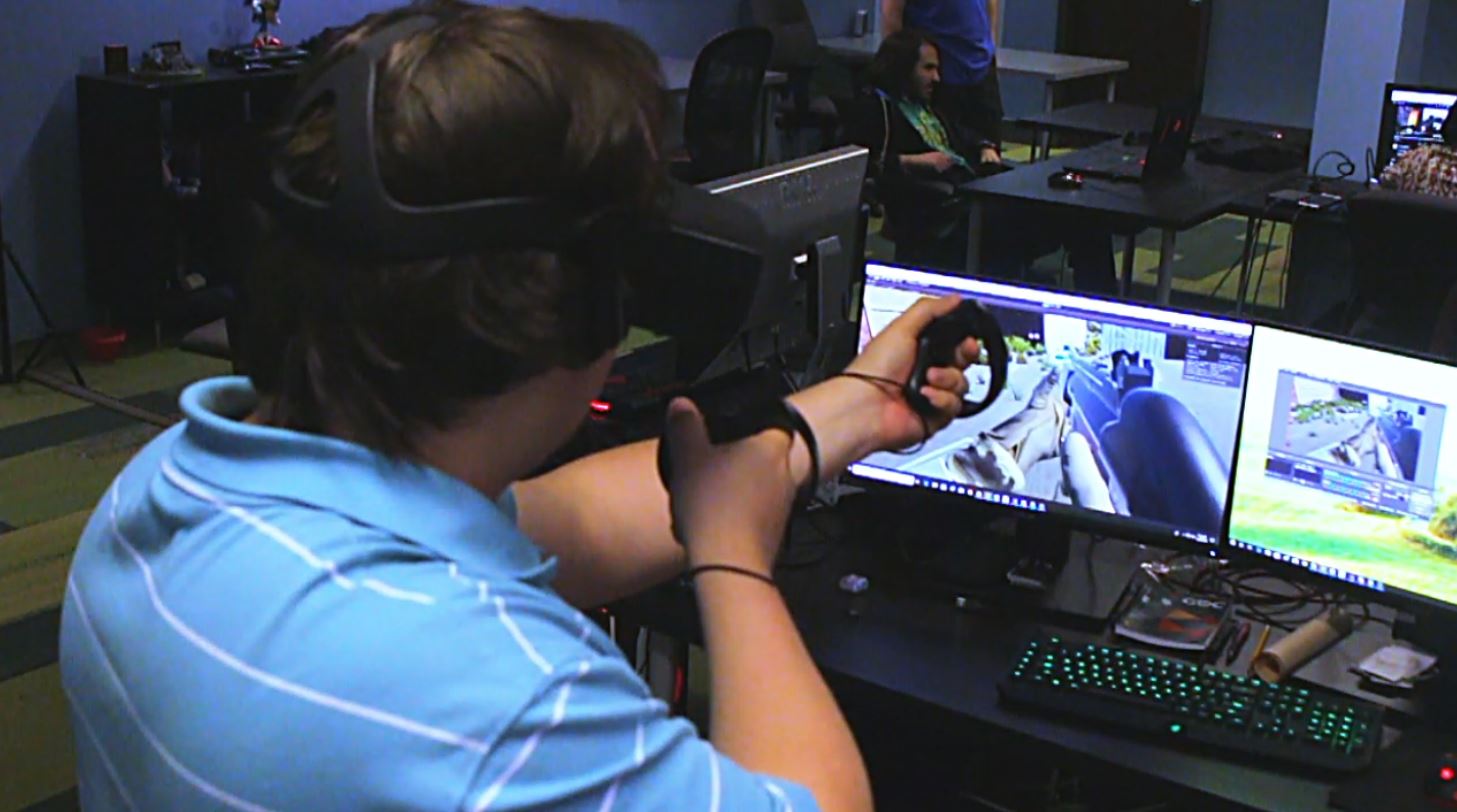
The map itself in Virtual Battlegrounds is a massive 4km x 4km playspace with several landmarks, cities, villages, and a variety of terrain features and elevation. For those paying attention, that’s actually the same size as PUBG’s third, smaller map. But in VR, it feels enormous.
Standing on the loading ramp at the back of the helicopter as it flies over the map the sheer sense of scale really sets in. In a game of Stand Out or Rec Royale you can easily get to pretty much any corner of the map when you jump out no problem, but depending on your spawn point, you may not see entire sections of Virtual Battlegrounds for a while. The map is just simply huge.
Right now they’ve got the game optimized for 24 players at a time, with some bots, but are aiming to up that number to about 32 players at a time for launch. Including bots to pad out the experience and keep the action rolling is a good idea, especially considering how tough it is to maintain a strong playerbase in VR titles.
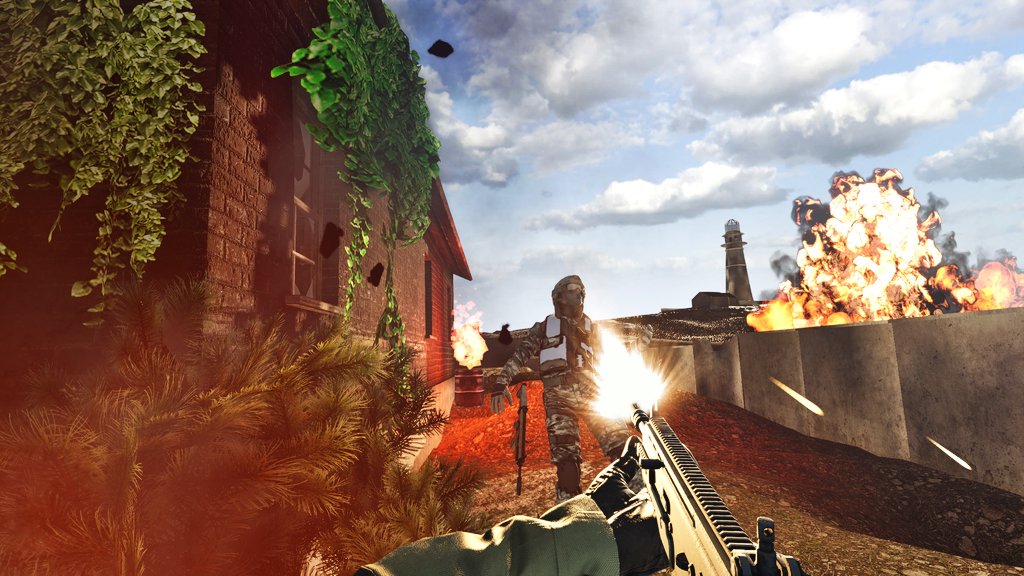
Getting Physical
From what I’ve seen, the most surprising and impactful feature that Virtual Battlegrounds has is its climbing system. I haven’t seen anything like this in any other shooter or battle royale game — VR or otherwise.
If you’ve ever played Climbey, The Climb, or Robinson: The Journey then you’ll have a pretty good idea of how the climbing mechanics work in Virtual Battlegrounds, but everything is pushed to the absolute limit. Buildings, trees, mountains, walls, rocks, skyscrapers — it doesn’t matter.
Basically, you can climb just about anything and everything in the game.
Similar to how the building mechanics make Fortnite a fundamentally different game than PUBG, the climbing system in Virtual Battlegrounds is a literal game changer. Instead of walking around a mountain you can go over it. Instead of looking for a door to take cover in a building you can hang from the wall, dangle from the ceiling, or jump in through a window. You can scale anything and everything that you can touch and it’s an exhilarating sense of freedom.
During my demo I approached every situation differently than I would have in another battle royale game. When I come across a building, I’m not just checking my corners in the hallways inside, but scouring the ceiling and listening for footsteps on the roof as well. It makes the whole landscape viable and forces you to be aware of your entire 360-degree surroundings at all times, a bit like Echo Combat.
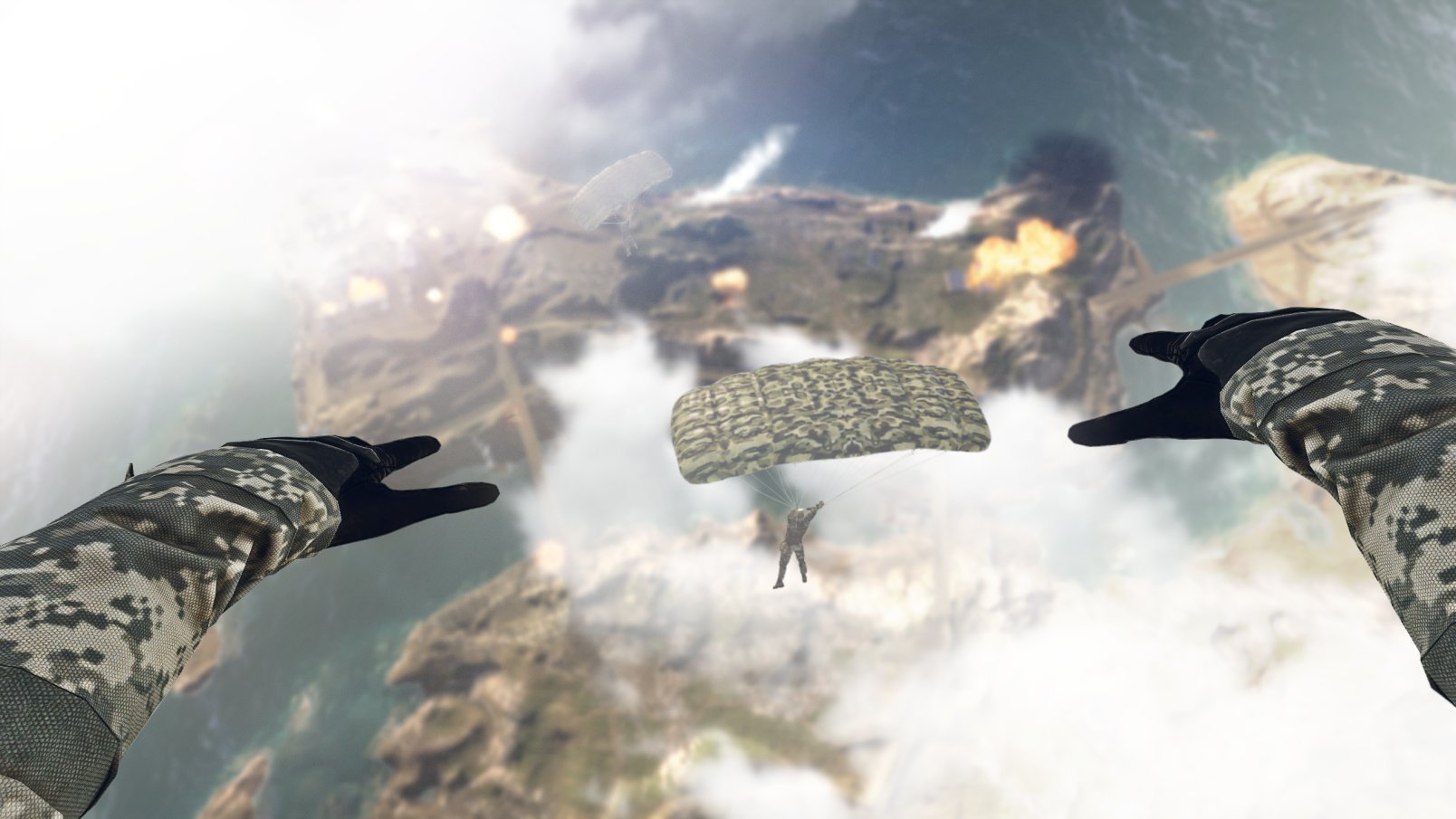
That sense of physicality is also represented in other areas of the game as well. Similar to Skyrim VR, you have to actually move your arms to swim in Virtual Battlegrounds. When you jump out of the helicopter at the start of the match, you can stretch your arms in front of you to dive down or spread them at your side to slow your speed.
If you swing your arms downward like you’re lunging then you can jump in place. Driving vehicles requires two hands and careful steering. All of the weapons have to be physically manipulated with your hands like you’re actually holding them.
You’ve even got a backpack to store your excess gear that doesn’t fit in your primary weapon holsters and gear belt. That’s a lot of attention to detail.
Focusing On VR Esports
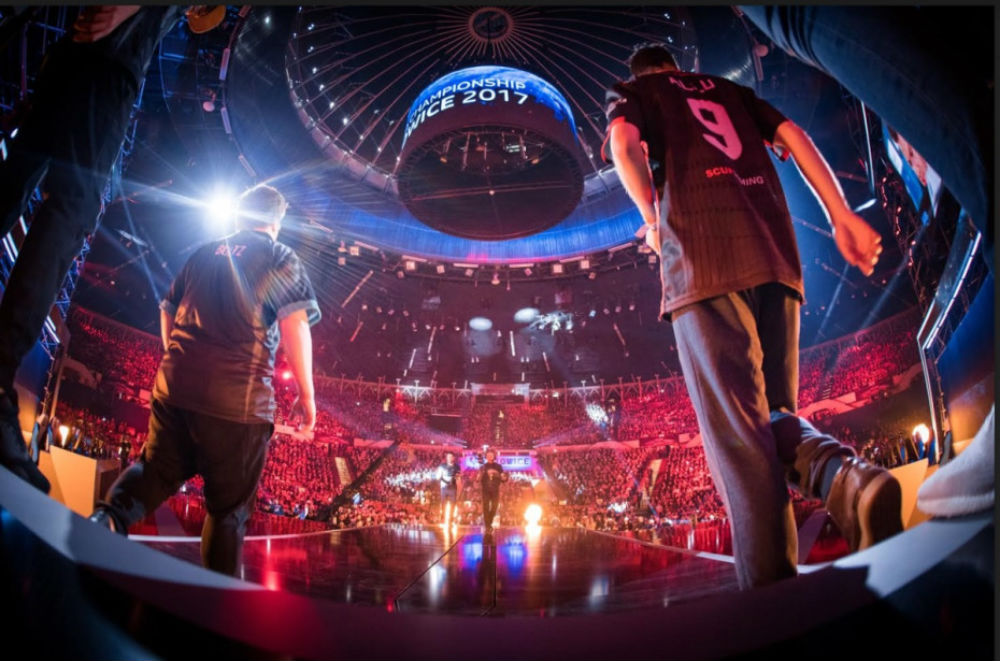
There’s been no greater time to be an esports professional in the history of video games than right now. The first Overwatch League season just recently ended and saw the game broadcast, live, on ESPN and in bars around the world. Contestants are winning thousands of dollars playing games like Overwatch, Dota 2, League of Legends, PUBG, Fortnite, and more.
And now with the second season of the VR League well underway, contestants are doing the same thing with VR games — but they’re doing so in a much more physical way. As impressive as professional Starcraft 2 players are, they’re still just sitting at a desk behind a keyboard. When you compete in a VR game like Echo Arena, Onward, or The Unspoken, you’re actually up and moving in a real, visceral competition. I strongly believe VR and esports have a long, bright future together.
Virtual Battlegrounds wants to tap into that. Onward is having success in the esports scene for a VR shooter, but not many others are yet. The battle royale formula lends itself perfectly to an esports setting, so Cyberdream is hoping to position their upcoming title as a veritable contender.
One way that they’re hoping to do that is by hosting a large esports tournament to celebrate the impending launch of Virtual Battlegrounds later this year. The event will likely be in September in Orlando, FL, and it will include cash prizes. Keep tabs on the company website for more details on that as they become available.
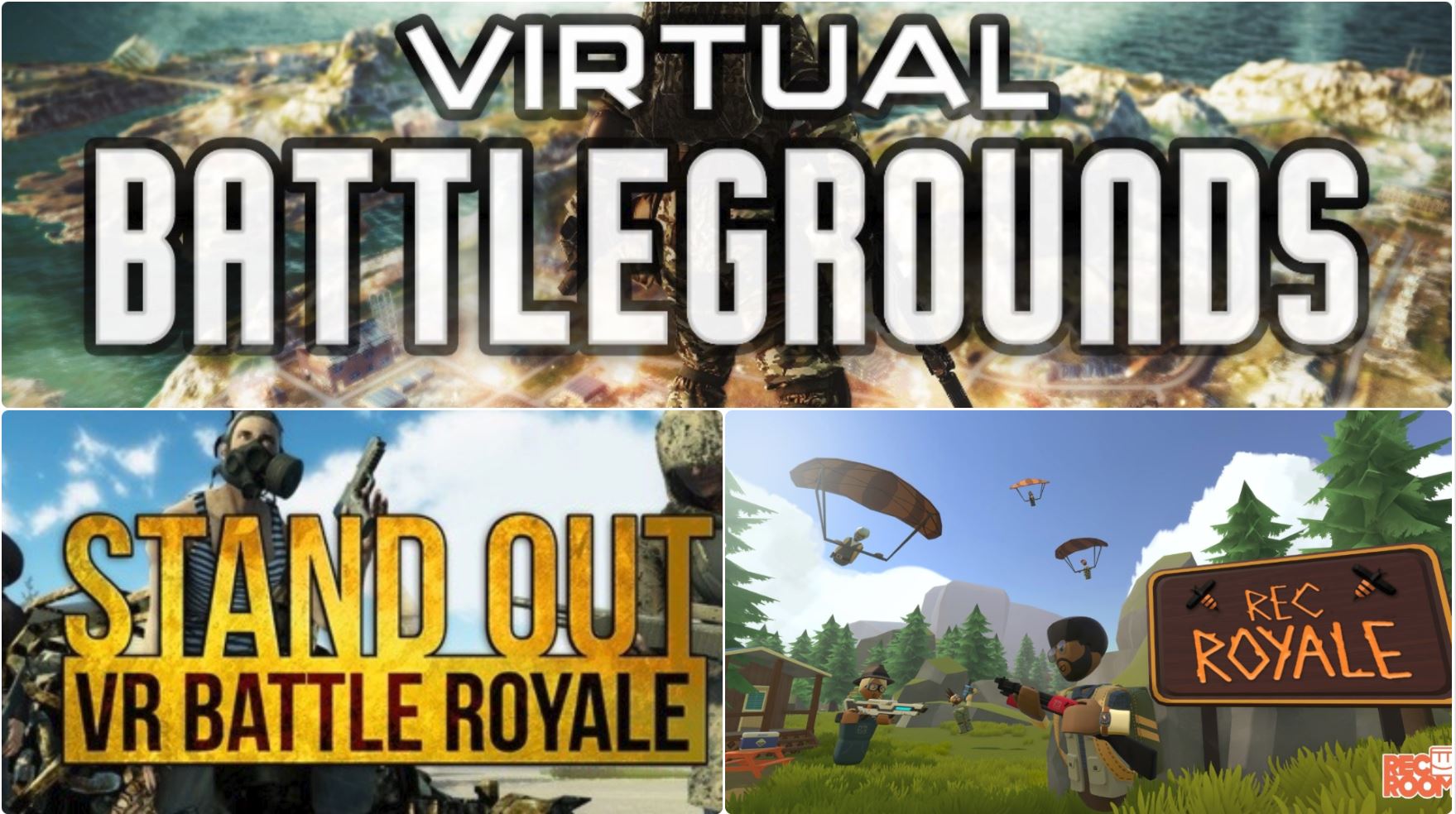
The Battle For The Best VR Battle Royale
Right now Virtual Battlegrounds has a steep hill to climb. Comparisons to PUBG are unavoidable, especially given the name and logo font, as are direct references to the likes of Stand Out and Rec Royale. But if Cyberdream can double down on what sets them apart (larger map, slower-paced matches, and physicality) then they’ve got a shot at making something notable here.
On paper, Virtual Battlegrounds sounds amazing. However, the build I played is not representative of the end vision Cyberdream has for the game. There were some hiccups and framerate drops, lots of quirky (but often hilarious) bugs, it was hard to tell if an enemy player was taking damage, the map isn’t populated with enough vehicles or buildings yet, and some features, like weapon customization and attachments, aren’t in the game yet.
But what is there currently and working — the climbing, the core gun handling, skydiving, swimming, etc — all feels really good and responsive. If the performance issues can get figured out and the rest of the features are included, I have no doubt that there will be an audience ready and waiting to dive into the harsh, post-apocalyptic locale of Virtual Battlegrounds.
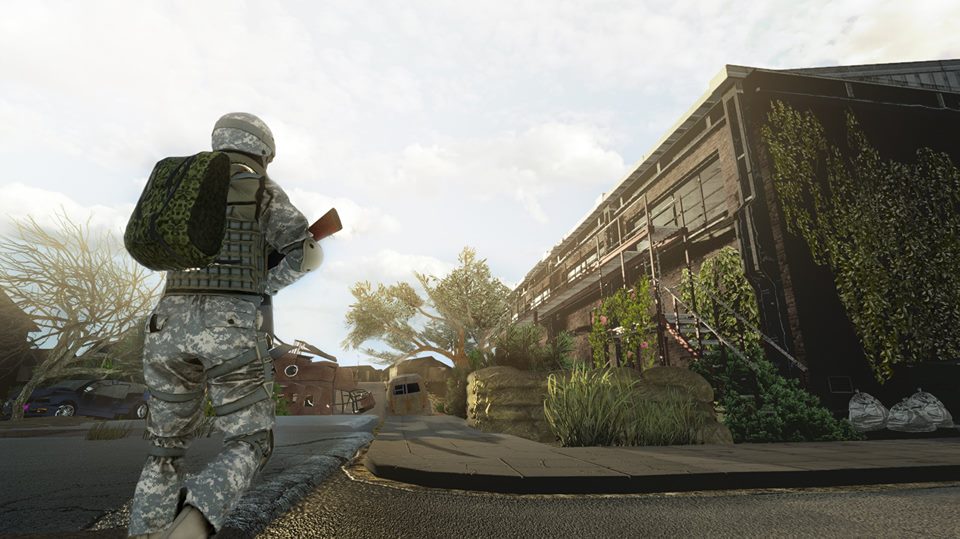
Virtual Battlegrounds does not currently have a definitive release date, but Cyberdream is planning for it to be on Steam Early Access before the end of the year following a September 2018 Esports launch event (details will be posted on the company website). You can sign up for the upcoming brief Open Alpha period (from Friday, August 10th at 3PM PT until Saturday, August 11th at 9PM PT) by visiting the official website here.
Cyberdream and its publisher, Spiral Summit Games, paid for travel and lodging for us to visit their studio and provide this coverage. You can read more about our policy on this in our Code of Ethics.
Editor’s Note: Since publication, some screenshots have been changed/updated.

